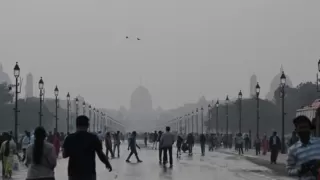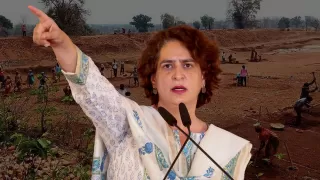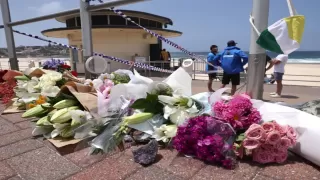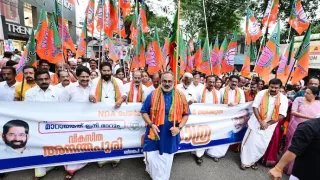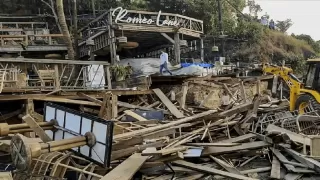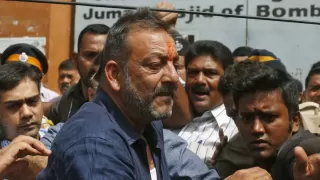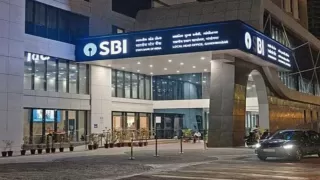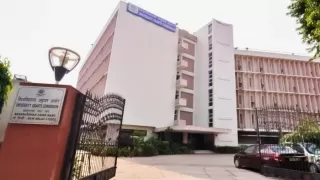A tragic night unfolded in central India when a passenger train collided with a cargo train, leaving at least 11 people dead and several others injured. The devastating incident occurred near Bilaspur, a key railway junction located approximately 115 kilometers northeast of Chhattisgarh’s capital, Raipur. The impact of the crash was so severe that one of the passenger coaches climbed atop a freight wagon, creating a chaotic scene of twisted metal, shattered glass, and desperate rescue efforts through the night.
Authorities reported that the collision took place late Tuesday evening, catching both passengers and railway staff off guard. Emergency teams rushed to the site under floodlights, using heavy machinery and cutters to access trapped victims. Survivors recalled hearing a loud explosion-like noise, followed by complete darkness as the train cars crumpled. For hours, rescuers fought against time, clearing debris and pulling survivors from the mangled compartments. By early Wednesday morning, the rescue operation had concluded, and rail services through the affected line were gradually restored.
Officials confirmed that among the deceased was the driver of the passenger train, who lost his life on impact. His co-pilot, a woman, sustained critical injuries and was immediately transferred to a private hospital for emergency treatment. Around 20 passengers suffered injuries ranging from fractures to head trauma, with some still undergoing intensive medical care. Families of the victims have begun arriving at local hospitals and railway offices in search of their loved ones as authorities continue identifying the deceased.
Details of the Collision
According to initial reports, the passenger train struck the rear of a stationary cargo train at high speed. The force of the collision derailed several coaches and caused massive structural damage. Railway engineers described the impact as one of the most intense in recent years in the Bilaspur region. One passenger coach was thrust upward, resting dangerously on top of a freight wagon before being brought down by cranes after several hours of laborious rescue work.
Witnesses recounted scenes of panic and confusion as passengers scrambled to safety. Some jumped from windows, while others tried to break open jammed doors. Local residents near the tracks rushed to the site, bringing torches, water, and blankets to assist the injured. “It was like the ground shook beneath us,” said one local villager who helped rescuers. “We heard cries and metal grinding — it was horrifying.”
Rescue and Relief Efforts
Rescue operations were carried out through the night by teams from the National Disaster Response Force (NDRF), railway police, and local volunteers. Floodlights illuminated the wreckage as cranes lifted mangled coaches and cutters sliced through iron sheets to reach those trapped. Medical teams provided first aid on-site before shifting patients to nearby hospitals. Officials confirmed that three additional bodies were recovered only after the coach was dismantled piece by piece.
Authorities announced that rail movement through the section resumed early Wednesday morning after clearance of debris and inspection of the tracks. Railway officials also ensured alternate routes for stranded trains, minimizing delays across the central zone network. The focus now shifts to the investigation into how such a catastrophic collision occurred, despite automated signaling systems in place on this route.
Government and Railway Response
Indian Railways issued a statement expressing deep sorrow over the tragedy and confirmed that an inquiry has been ordered to determine the cause. Preliminary investigations suggest either a signaling failure or human error, but officials are not ruling out a technical glitch. The Ministry of Railways announced financial compensation for the families of the deceased and for those injured in the accident. Teams have been deployed to provide support and assist families arriving at the crash site and hospitals.
Chhattisgarh’s Chief Minister Vishnu Deo Sai extended condolences to the bereaved families, promising all necessary aid and a swift investigation. “We stand with the victims and their families in this difficult time,” he said in a statement. Local administrations have set up helpline numbers for relatives seeking information about passengers who were onboard the ill-fated train.
Passengers and Survivors Speak Out
Survivors described the terrifying moments before the impact. Some said the train had slowed slightly, while others recalled feeling an unusual jolt moments before the crash. “I was asleep when I felt a sudden violent jerk,” said one survivor. “When I opened my eyes, everything was filled with dust and smoke. People were crying and trying to climb out.”
Medical teams attending to the injured stated that several patients were in shock, suffering not just physical injuries but psychological trauma from the experience. Hospitals in Bilaspur and nearby towns have been placed on high alert, with additional beds and doctors assigned for the emergency response. Community organizations and local NGOs have joined hands to provide food, clothing, and support to survivors and families waiting outside hospitals.
Train Collisions in India: A Recurring Concern
Train collisions and derailments remain a major safety concern in India’s vast railway network. With more than 14,000 trains operating daily across 64,000 kilometers of track, the system carries over 12 million passengers every day. Despite ongoing modernization efforts, the network continues to struggle with outdated infrastructure, maintenance challenges, and overburdened routes. Experts say human error, signaling faults, and miscommunication between control centers often contribute to accidents of this nature.
In recent years, the Indian government has prioritized rail safety by introducing advanced signaling systems, automatic train protection technologies, and real-time monitoring. However, officials admit that implementation across all regions is still underway. The latest tragedy has reignited debates about the pace of these reforms and whether enough has been done to prevent repeat incidents.
Previous Train Disasters and Lessons Learned
India has witnessed several catastrophic rail accidents in the past decade. In June 2023, one of the deadliest collisions in the country’s history claimed more than 280 lives in Odisha, prompting widespread calls for modernization of safety systems. The government subsequently launched extensive rail audits and introduced the “Kavach” anti-collision system, aimed at preventing trains from colliding due to human error. Yet, despite these measures, incidents like the Bilaspur crash reveal that vulnerabilities persist within the operational framework.
Experts stress that long-term safety depends not just on technology but also on rigorous staff training, regular maintenance, and accountability at every level. Railway unions have also called for stricter safety protocols and the installation of automatic braking systems on all passenger routes by 2026.
Aftermath and the Road Ahead
As the region recovers from the shock, questions loom large over accountability and preventive measures. The official inquiry is expected to determine whether negligence or technical malfunction caused the disaster. Meanwhile, families mourn their loved ones, and the nation once again confronts the harsh reality of its overburdened railway system.
For now, the focus remains on ensuring the well-being of survivors and providing justice to the families of those who lost their lives. In the days to come, authorities are expected to release detailed reports on the sequence of events leading up to the collision, paving the way for crucial lessons that could strengthen the future of rail safety in India.
The Bilaspur collision stands as a somber reminder of the importance of vigilance, modernization, and preparedness. For millions who rely on the railway as a daily lifeline, it underscores the urgent need to prioritize safety over speed, and prevention over reaction — lessons India can no longer afford to delay.
Also Read: Rahul Gandhi Alleges Brazil Model Voted 22 Times in Haryana






